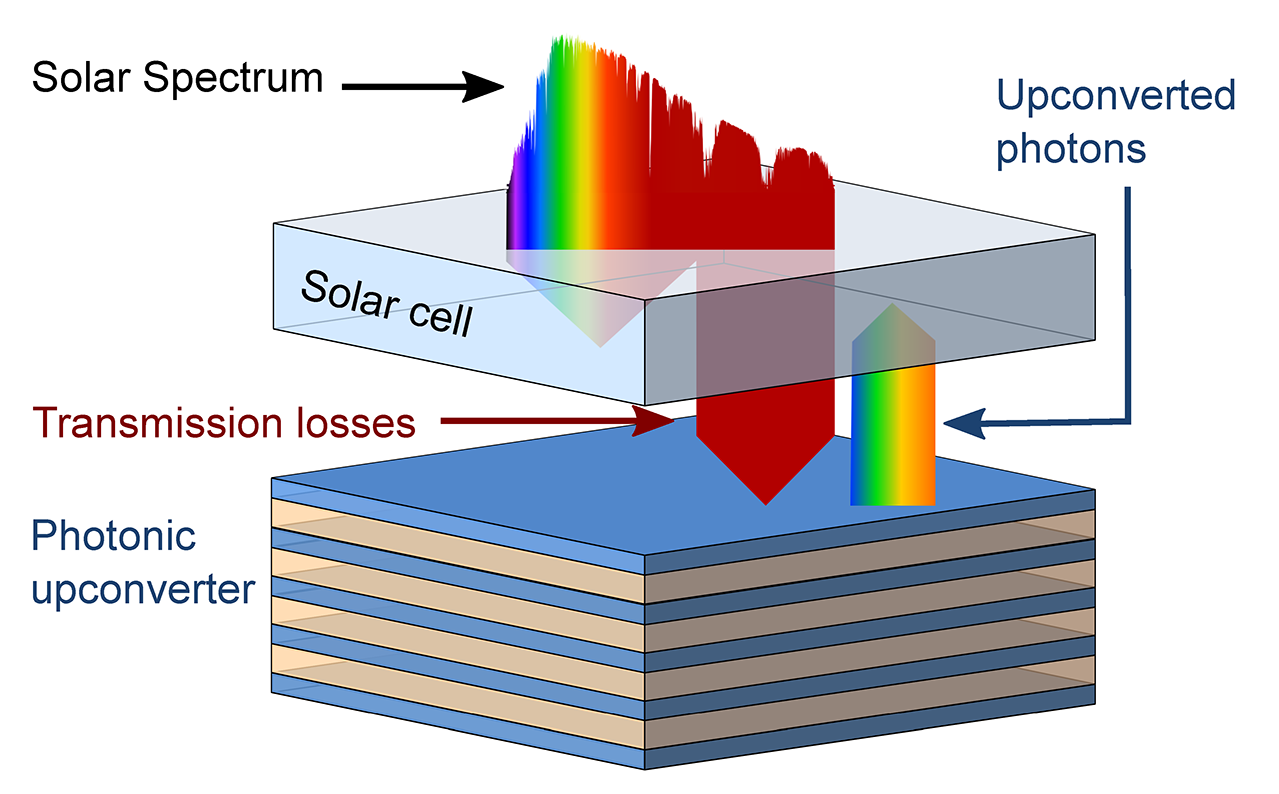Experimental Validation of a Simulation Tool to Model Photonic Effects on Upconversion – published in Nature Communications
Photon upconversion, the conversion of low-energy into higher-energy photons, has gained much interest in the fields of materials chemistry and physics. However, an adequate theoretical framework to optimize photonic structure designs for upconversion enhancement has been lacking. Researchers from Fraunhofer ISE have developed a comprehensive simulation tool to model photonic effects on upconversion dynamics. In an international cooperation with R&D groups from Stanford University, the Karlsruhe Institute of Technology (KIT) and Aarhus University, they now reached an experimental validation of the modeling framework and published their work in Nature Communications.

Upconverter materials are of major interest in various fields, ranging from applications in medicine, such as bio-imaging and theranostics, to security and photovoltaics. Photonic structures influence properties of light and have the potential to significantly increase upconversion efficiency. Thereby, photonic upconverter devices require a precise design in order to maximize upconversion efficiency. However, the theoretical understanding of how photonic effects influence upconversion and its implementation in simulation models is mostly lacking. Without this understanding, a proper photonic structure design optimization is not possible, and the actual potential of the photonic structure cannot be fully exploited.
»Over the past 15 years, our team has been working on the development of a comprehensive simulation tool to model photonic effects on upconversion dynamics« says Clarissa Hofmann from the Novel Solar Cell Concepts group at Fraunhofer ISE. »We are happy to now be able to fill the gap in the theoretical understanding of how photonic effects influence UC. Our simulation tool now allows us to design photonic structures precisely for different upconverting materials and applications«, she adds.
The simulation tool is now available to the research community on the new open access Fraunhofer data platform Fordatis.
Last modified: